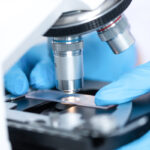Myomectomy (Fibroid Removal Surgery)

İçindekiler
ToggleDuring the reproductive period in women, the myomectomy surgery, in which benign tumors in the uterus called fibroids are removed, allows the fibroids to be taken out while preserving the uterus. Fibroids may develop without showing any symptoms in most women. However, some fibroids can cause pain, severe and irregular menstrual bleeding, infertility, or put pressure on surrounding tissues leading to constipation and urinary problems. This can negatively affect a woman’s daily life. In such cases, surgery may be necessary to remove the fibroids.
There are different methods for fibroid removal. These are evaluated according to the woman’s desire to have children, her age, and the location, size, and number of fibroids. Myomectomy surgery is especially recommended for women who wish to have children, do not want their uterus removed, and whose fibroids are causing infertility.
Although the relationship between fibroids and infertility or pregnancy is not definite, some women with fibroids can still conceive and maintain their pregnancies without any problem. However, some women cannot conceive, or if they do, they may experience miscarriage. Women who have fibroids and have faced such problems regarding pregnancy should definitely be evaluated and treated for fibroids. It is known that submucosal fibroids located inside the uterus cause infertility and must be removed. On the other hand, the effect of intramural fibroids (within the uterine wall) or subserosal fibroids (growing outside the uterus) on infertility is not definite.
Patients who undergo myomectomy surgery can usually become pregnant afterwards. However, the fertility rates determined after surgery may vary. Studies show that women who try to conceive after the surgery are generally successful.
What are the Risks of Myomectomy?
This surgery carries a very low risk. However, the surgeon’s experience is important in minimizing these risks.
Excessive bleeding
The uterus is surrounded by a network of blood vessels. Fibroids stimulate the growth of new blood vessels to supply themselves. For this reason, certain precautions should be taken against excessive bleeding during myomectomy surgery. These include blocking blood flow in uterine vessels and injecting drugs around fibroids to constrict blood vessels.
Scar tissue
Incisions made in the uterus to remove fibroids may cause adhesions (scar tissue that develops after surgery). Adhesions that develop inside the uterus may block the development of a fertilized egg. Although this is rare, adhesions outside the uterus may affect nearby structures, leading to blocked tubes or bowel obstruction.
Development of new fibroids
Myomectomy surgery cannot prevent the development of new fibroids. Small fibroids not visible during surgery may grow later and cause symptoms. As long as the uterus is in place, fibroid formation is possible. However, women with only one fibroid are less likely to develop new ones compared to women with multiple fibroids. If new fibroids occur, another myomectomy, hysterectomy, or other treatments may be considered.
Birth complications
Women who have previously undergone myomectomy may experience some complications during delivery. If the surgeon had to make a deep incision in the uterine wall during surgery, a cesarean delivery is required to prevent uterine rupture during labor.
Inability to reconstruct the uterus
During surgery, in order to remove fibroids, the surgeon may have to leave a cavity and cut into the uterine wall muscle. Multiple stitches are required to close this area. In cases of severe bleeding or inability to reconstruct the uterus properly, hysterectomy may be necessary.
What Measures Can Be Taken to Reduce the Risks of Myomectomy?
Taking iron supplements and multivitamins: If women have iron deficiency due to heavy menstrual bleeding, they should take iron medication as recommended by their doctor before surgery.
Hormone therapy: To correct anemia, hormone therapy may be applied before surgery. To stop or reduce menstrual bleeding, GnRH agonists, hormone therapy, or birth control pills can be used. GnRH agonists block the production of estrogen and progesterone, stopping menstrual bleeding and allowing the body to store hemoglobin and iron.
Treatment to shrink fibroids: Certain hormonal treatments may shrink the uterus and fibroids. This effect allows the surgeon to make a smaller incision or use minimally invasive surgery instead of open surgery. These effects are achieved with medications used before surgery, and they disappear when the medication is stopped.
How to Prepare for Myomectomy Surgery?
Patients should not eat anything for 8 hours before surgery. The stomach must be empty before surgery. Patients taking medication should consult their doctor. Before surgery, patients may need to wear special stockings to prevent blood clotting. The abdominal area is cleaned and shaved. Anesthesia is administered before entering surgery.
Surgical Approaches in Myomectomy
Depending on the size and type of fibroid, the surgeon may choose one of the following surgical approaches:
- Abdominal myomectomy: The uterus is accessed with an open abdominal incision, and fibroids are removed.
- Laparoscopic myomectomy: Several small incisions are made, and fibroids are removed with special instruments.
- Hysteroscopic myomectomy: Special instruments are inserted through the vagina and cervix into the uterus to remove fibroids.
How Is Abdominal Myomectomy (Laparotomy) Performed?
This procedure is performed under general anesthesia. The uterus is accessed through one or two vertical or horizontal incisions. A vertical incision is made from the midline of the abdomen below the navel to the pubic bone. This provides easy access to the uterus and reduces bleeding, making it especially preferred if the uterus is enlarged to the size of a 16-week pregnancy. It is also preferred when the fibroid is located in the connective tissue between the uterus and the pelvic wall. A horizontal incision is made just above the pubic bone. Since this incision follows the natural skin lines, the scar is finer and causes less pain, but access to the pelvis is more difficult.
During surgery, the doctor can visually examine the uterus, palpate the fibroids, make incisions accordingly, remove them, and then repair the uterus. After surgery, the patient is monitored until the effects of anesthesia wear off. Medications such as morphine are given for pain. Once discharged, patients take oral medications for pain relief and are encouraged to walk early, reducing postoperative complications. Patients should avoid heavy work, sexual activity, driving, and tampon use for about 6 weeks. After abdominal myomectomy, patients usually stay in the hospital for 2–3 days, and recovery takes 4–6 weeks.
How Is Laparoscopic Myomectomy Performed?
In this method, an incision is made through the navel. Carbon dioxide gas is used to inflate the abdomen. A laparoscope is placed into the pelvic cavity to view the ovaries, uterus, and other pelvic organs. Small incisions are then made in the abdominal wall to remove the fibroids. The fibroid is removed through a small incision in the uterine wall or vagina.
How Is Hysteroscopic Myomectomy Performed?
This method is generally recommended for submucosal fibroids located inside the uterine cavity. Under general or spinal anesthesia, a hysteroscope is inserted through the vagina and cervix into the uterus, and the fibroids are removed.






